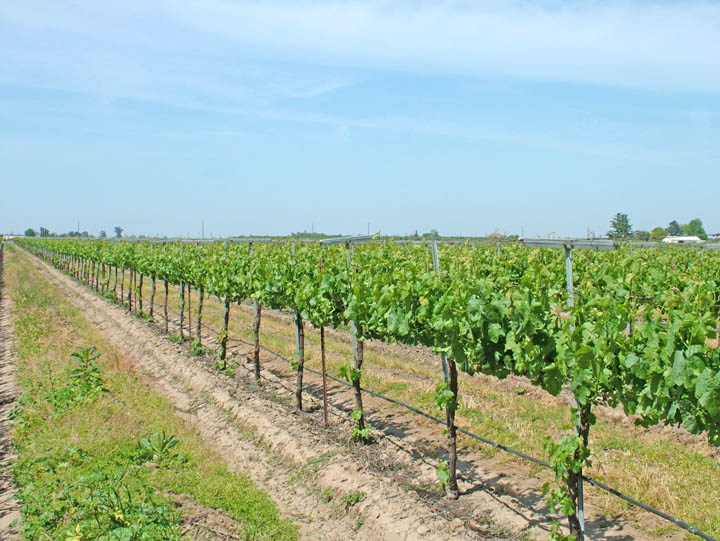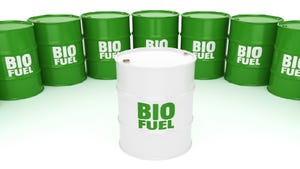
To irrigate grapevines effectively, one needs to know when to start irrigating, and then how much water to apply. Withholding irrigation until it is needed is an important cultural practice because it saves water and it enables irrigation to be a useful tool for helping to manage vegetative growth, yield, and fruit quality.
May 5, 2011

To irrigate grapevines effectively, one needs to know when to start irrigating, and then how much water to apply. Withholding irrigation until it is needed is an important cultural practice because it saves water and it enables irrigation to be a useful tool for helping to manage vegetative growth, yield, and fruit quality.
In the Raisin Production Manual, William Peacock, UCCE viticulture advisor emeritus, and his colleagues at UC Davis, suggest withholding irrigation until vines have used between 30 percent and 50 percent of the available water in the root zone.
Available water content of soils at field capacity can be estimated from the soil type and depth, or measurements can be made with various soil‐based tools including neutron probes or capacitance sensors. Plant water potential measurements may also be used along, or in place, soil moisture information to indicate the time to commence irrigation.
Dr. Larry Williams, Professor of Viticulture and irrigation specialist, generally suggests watering white wine and raisin varieties once their mid‐day leaf water potential declines to ‐10 bars. In years when the season starts with soil at field capacity, the soils of many San Joaquin Valley vineyards may have enough water to supply the vines through bloom.
From the time irrigation has commenced, the goal is to periodically replace the water lost to evapotranspiration (ET), which includes the combined loss of water due to evaporation from the soil surface, and from the vine’s leaves. Suggested watering regimes for raisin grapes have been published and are useful management guides.
Growers may also develop their own water use estimates to use for comparison purposes or, with experience, as a primary guide. To estimate the water used by vines during a defined period of time, growers need to know the cumulative reference ET (ETo) from a nearby weather station, which can be accessed from the Internet, the crop coefficient (Kc), and the efficiency of their irrigation system.
Dr. Ed Hellman, Viticulture Extension Specialist at Texas A&M, has written a useful extension publication describing how growers can create their own crop coefficients based on Dr. William’s research findings. The Kc is a function of the percent shaded area in the vineyard, so it changes through the season, and therefore must be recalculated, as the vines grow.
According to the authors of the Raisin Production Manual, it may not be necessary or desireable to replace 100 percent of the water lost; supplying 70 percent to 80 percent of the water used may actually optimize yields. However, the presence or absence of weeds, cover crops, vine health, and other factors may influence the performance of vines subjected to deficit irrigations, so care should be taken when implementing deficit irrigation practices.
Matthew Fidelibus is the Viticulture Extension Specialist, located at the UC Kearney Agriculture Center. Stephen Vasquez is the UC Cooperative Extension Viticulture Farm Advisor in Fresno County.
You May Also Like



